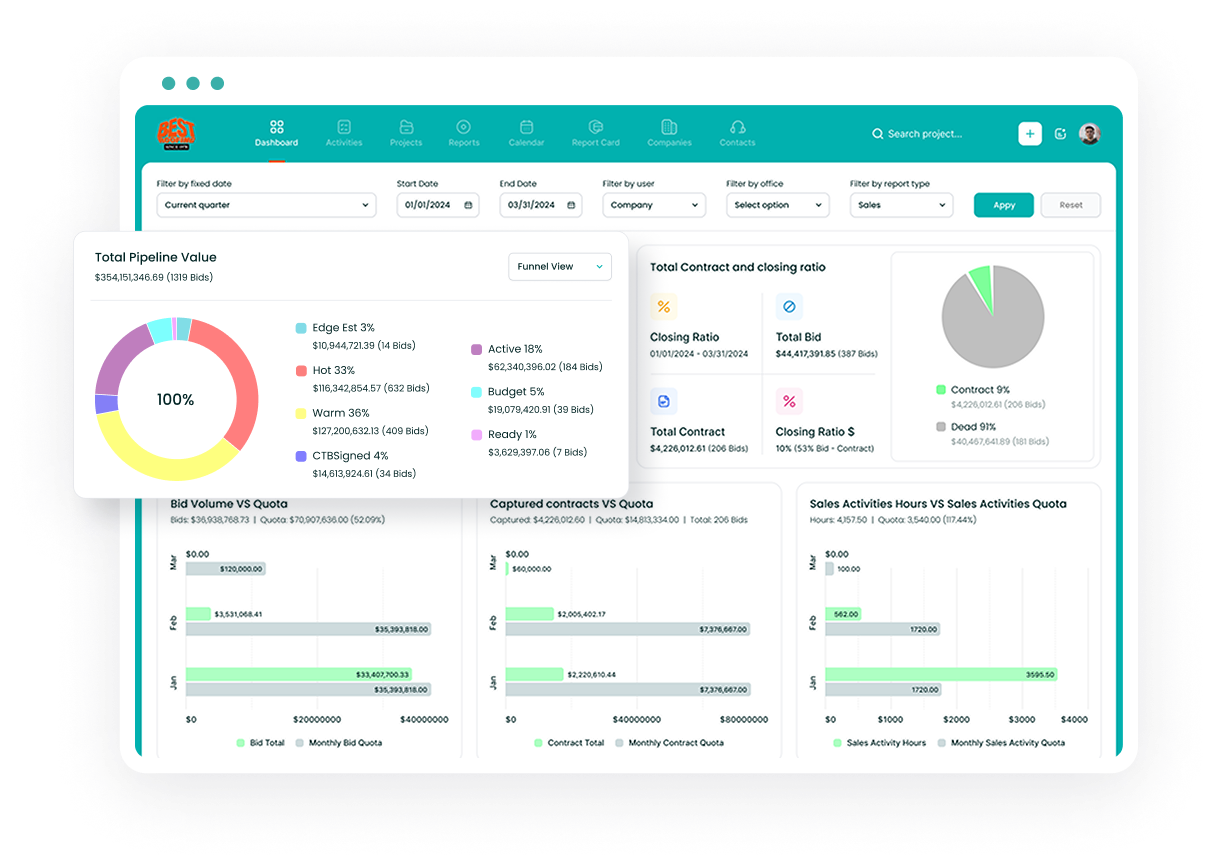Core Functionality Comparison
Sage 100 delivers robust enterprise resource planning (ERP) capabilities designed for mid-sized businesses, particularly those in manufacturing and distribution. QuickBooks, while feature-rich, focuses primarily on basic accounting functions and is better suited for small businesses and startups.
Financial Management
Sage 100 Capabilities: The platform offers comprehensive financial management tools with multi-department and multi-company consolidations. It provides real-time reporting tools for financial management and allows tracking of margins over time to optimize trends and profitability.
QuickBooks Features: While QuickBooks Enterprise has advanced reporting capabilities for accounting, it lacks consolidated reporting across multiple business units. The system is not GAAP compliant, which can make board of directors statements or annual investor audits more challenging.
User Interface and Experience
Sage 100 presents a more traditional and robust interface focused on comprehensive financial management[. The navigation can be slightly complex initially, but it offers extensive customization options that allow users to tailor their dashboard to their specific needs[.
QuickBooks, conversely, boasts an intuitive and user-friendly interface that simplifies everyday accounting tasks[. Its clean, modern design makes it particularly appealing to small business owners who may not have extensive accounting experience[11].
Scalability and Performance
Database Management
Sage 100 utilizes a SQL server backend since 2011 and can support file sizes up to 2GB. With concurrent licensing, it can accommodate up to 100 users. When companies outgrow Sage 100's capabilities, there's a clear migration path to other Sage solutions.
QuickBooks Enterprise supports up to 30 simultaneous users, and its performance tends to decrease as company file size increases. The general guideline for file limits is no more than 1GB or seven years of transaction history.
Industry-Specific Features
Manufacturing and Distribution
Sage 100 excels in manufacturing and distribution capabilities[. It includes:
- Light manufacturing support
- Make-to-stock functionality
- Make-to-order capabilities
- Advanced warehouse automation features[
QuickBooks offers basic inventory management but requires add-on software for more complex manufacturing and distribution needs.
Security and Access Control
Sage 100 provides sophisticated security controls, allowing users to access only the information they are authorized to see. The system enables creation of ideal workflows and multi-functional data sharing to drive business decisions.
QuickBooks' security settings are less flexible, with users either having complete access or no access to accounts receivable and accounts payable functions.
Pricing Structure
Sage 100 Pricing:
- Starts at $78 per user per month
- Requires additional one-time setup fee
- Pricing includes on-premise deployment
QuickBooks Enterprise Pricing:
- Begins at $80 per user per month
- Additional costs for industry-specific solutions
- Various add-on pricing options available
Integration Capabilities
QuickBooks offers superior integration options with over 650 business apps spanning customer management, payroll, forecasting, and project management. Sage 100, while having fewer integrations (approximately 25), focuses on industry-specific tools particularly valuable for manufacturing and distribution businesses[.
Mobile Accessibility
QuickBooks provides a robust mobile app that enables users to:
- Invoice customers
- Receive payments
- Pay bills
- Deposit checks
- Review projects
- Track mileage via GPS
- Scan receipts
Sage 100 has limited mobile functionality, primarily focused on employee time tracking[.
Reporting and Analytics
Sage 100 Reporting Features:
- Real-time reporting tools
- Margin tracking over time
- Multi-department consolidation
- Custom calculation capabilities
QuickBooks Reporting Features:
- Basic accounting reports
- Limited consolidation capabilities
- Standard financial statements
- Basic inventory reporting
Migration Considerations
When considering a switch between systems, it's important to note that Sage 100 allows for data conversion from QuickBooks, including:
- Accounts
- Customers
- Vendors
- Employees
- Items
- Jobs[
Making the Decision
Choose Sage 100 if:
- Your business has outgrown your current solution
- You need better reporting capabilities
- You require greater visibility over business activities
- Manual processes are increasing overhead costs
- You need advanced manufacturing or distribution features[
Choose QuickBooks if:
- You're a small business with basic accounting needs
- User-friendly interface is a priority
- You need extensive third-party integrations
- Mobile accessibility is crucial
- You have a limited number of users
Long-term Considerations
When evaluating these solutions, consider your business's growth trajectory. While QuickBooks may be sufficient for current needs, growing businesses often find themselves requiring the more robust features of Sage 100. The cost of migration and training should be weighed against the long-term benefits of choosing the right system from the start.
Both solutions serve their target markets well, but they address different business needs and scales of operation. Sage 100 is designed for growing mid-sized businesses with complex needs, particularly in manufacturing and distribution, while QuickBooks remains the go-to solution for small businesses seeking straightforward accounting functionality.
Citations: [1] https://4acc.com/article/sage-100-vs-quickbooks/ [2] https://blaksheepcreative.com/digital-marketing/content-marketing/copywriting/how-to-write-engaging-blog-post/ [3] https://wordpress.com/go/content-blogging/how-to-write-a-good-blog-post/ [4] https://www.marketingprofs.com/articles/2022/47799/10-tips-for-writing-engaging-blog-posts [5] https://www.rklesolutions.com/sage-100-vs-quickbooks-enterprise [6] https://seowind.io/how-long-does-it-take-to-write-a-blog-post/ [7] https://www.linkedin.com/pulse/dos-donts-writing-engaging-blog-posts-socialgamma-4jlzc [8] https://blog.hubspot.com/marketing/how-to-start-a-blog [9] https://www.wordstream.com/blog/ws/2015/02/09/how-to-write-a-blog-post [10] https://www.acecloudhosting.com/blog/sage-vs-quickbooks/ [11] https://www.constructioncostaccounting.com/post/sage-100-contractor-vs-quickbooks [12] https://www.dwdtechgroup.com/general/quickbooks-vs-sage-100-compare-key-differences/ [13] https://www.sage.com/en-ca/sage-business-cloud/accounting/switch-to-sage/sage-vs-quickbooks/ [14] https://www.capterra.com/compare/189398-227232/QuickBooks-Online-vs-Sage-100cloud

